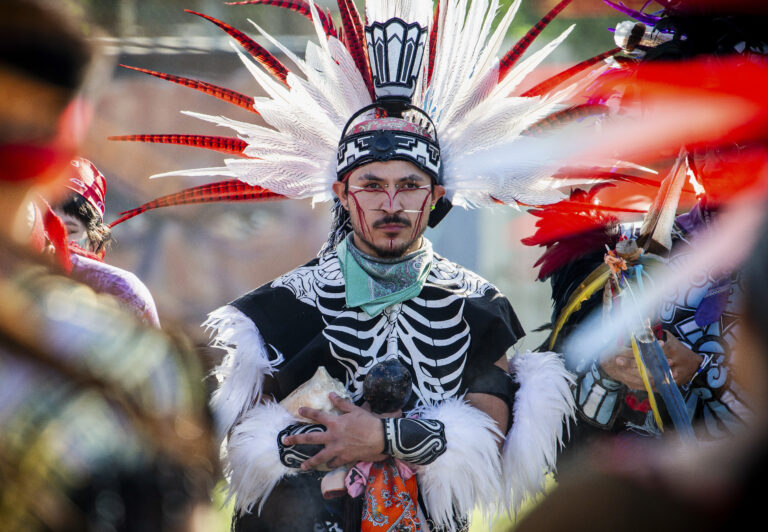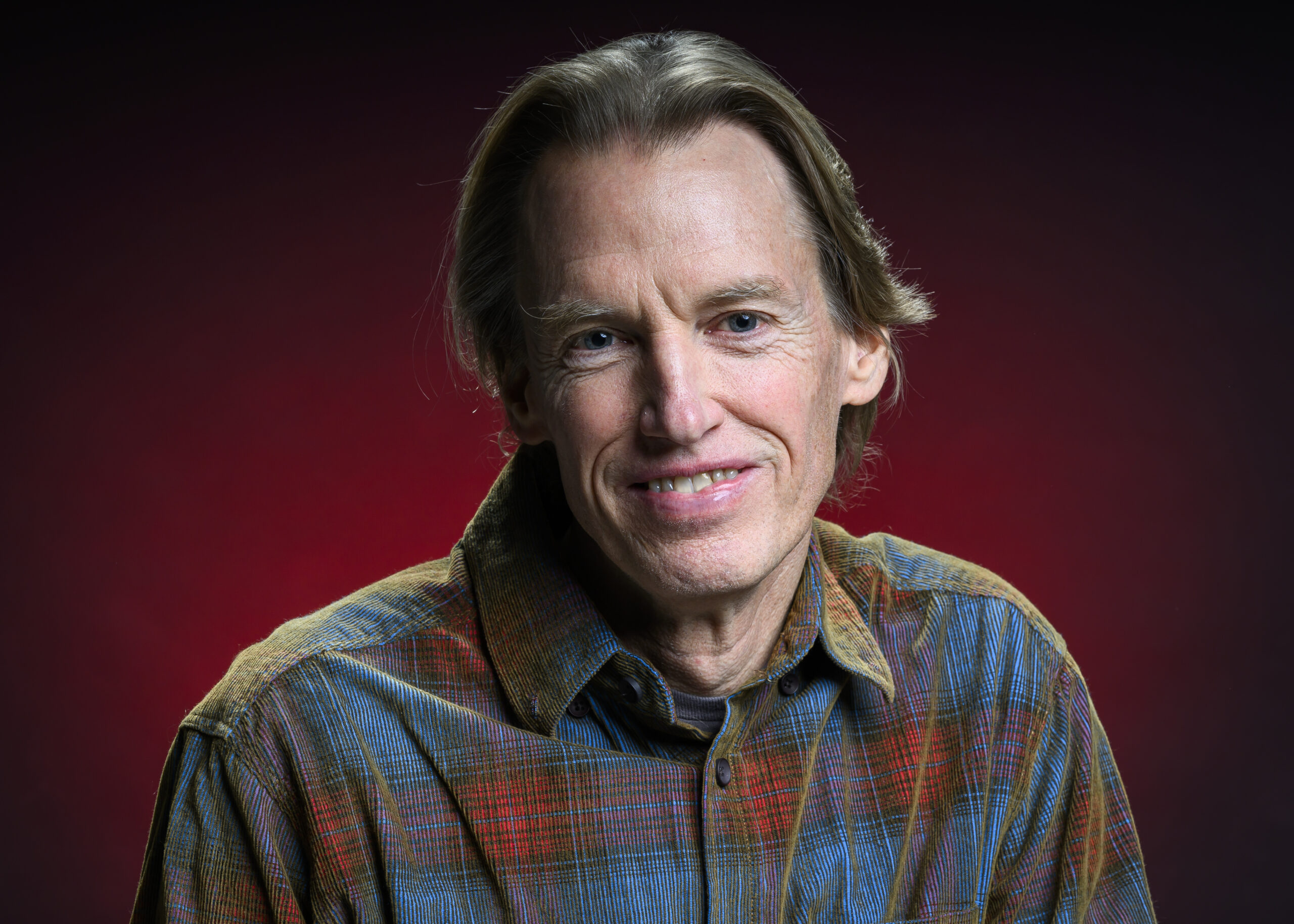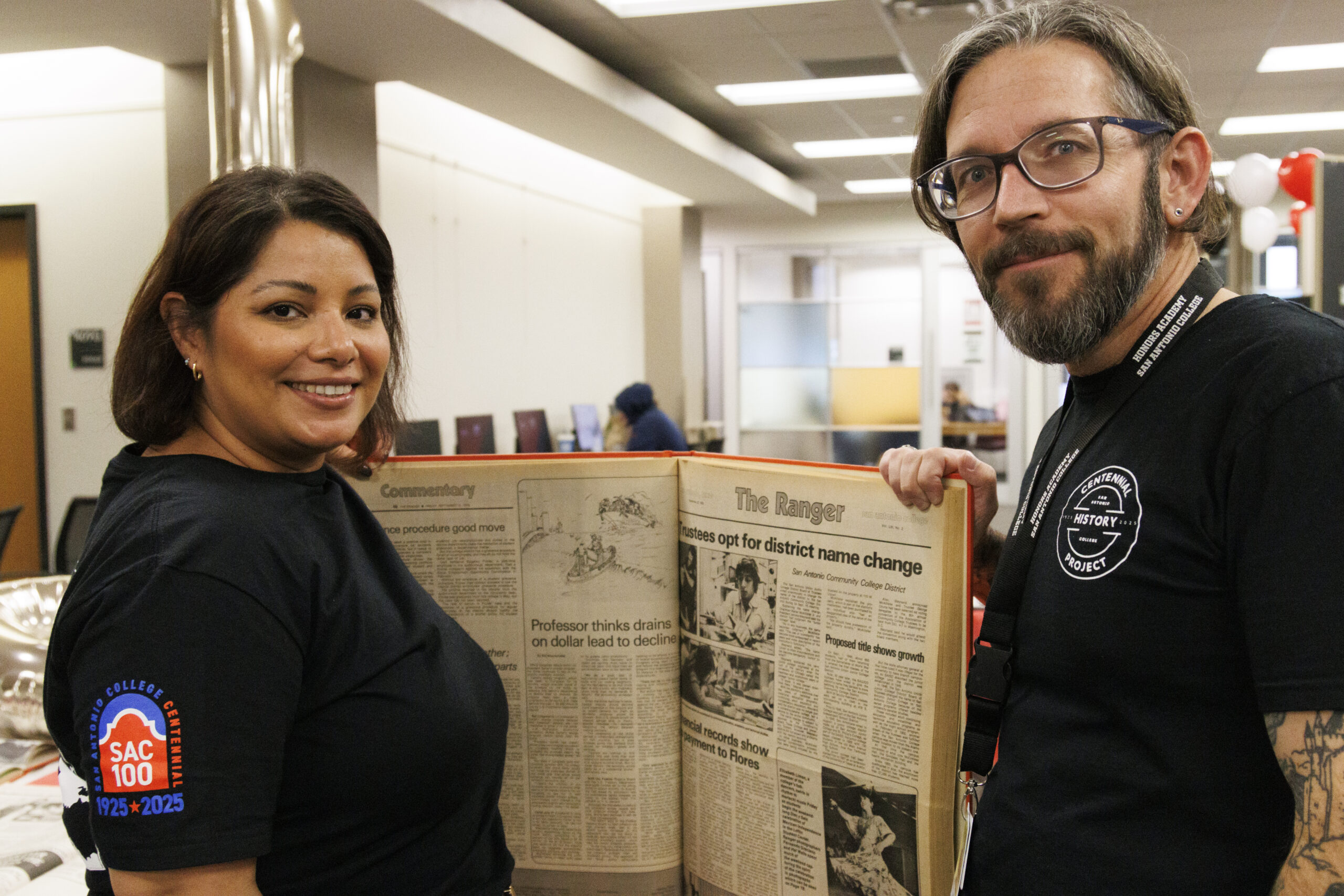Editor’s note: This is a photo essay with reporting and personal reflections by the author.
Laughter and thunderous drumming filled the air as the Native American and First Nation people danced and chanted, transforming a mundane Austin park into a vibrant mosaic of native regalia April 21. Sunlight painted intermittent clouds and highlighted handmade feathers on ceremonial headdresses. An overwhelming sense of freedom and joy imbued the space.
Every year, the Native American Indigenous Collective (NAIC), a student-led organization at the University of Texas at Austin, holds an all-day powwow. Native American and First Nation communities come together to sing, dance, chant and celebrate culture.
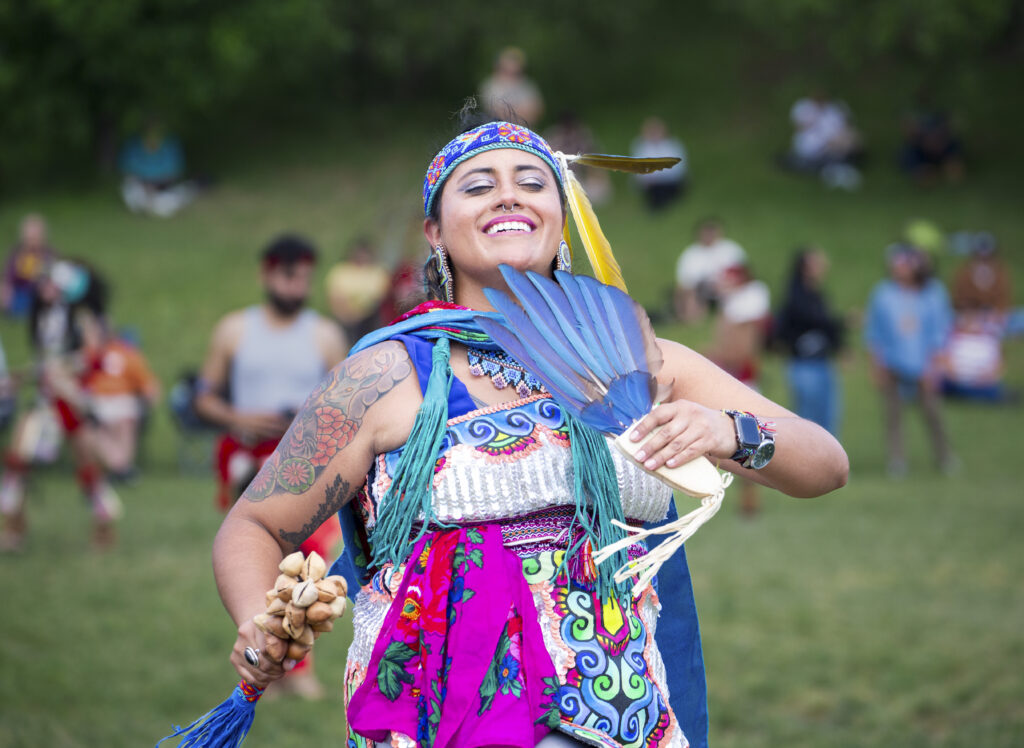
NAIC engages with “the principles of Native empowerment, transnational, and intertribal unity, scholarship, and community,” according to UT Austin’s website. NAIC members said UT used to host the annual celebration on campus in front of UT’s Tower of Longhorns, but when Texas’ S.B. 17 became law, it eliminated on-campus spaces for organizations promoting diversity, equity and inclusion. American Indians and Alaskan Natives make up 0.1% of about 42,400 enrolled undergraduate students at UT Austin.
I met NAIC member Lola Ponce at the Texas Intercollegiate Press Association (TIPA) April 12. Like me, Lola is a student photojournalist, and we competed against each other in TIPA’s live photojournalism competitions. Lola and I both managed to take home awards, and when I gave her a business card, I hardly expected to get an invite to photograph NAIC’s powwow a week later.
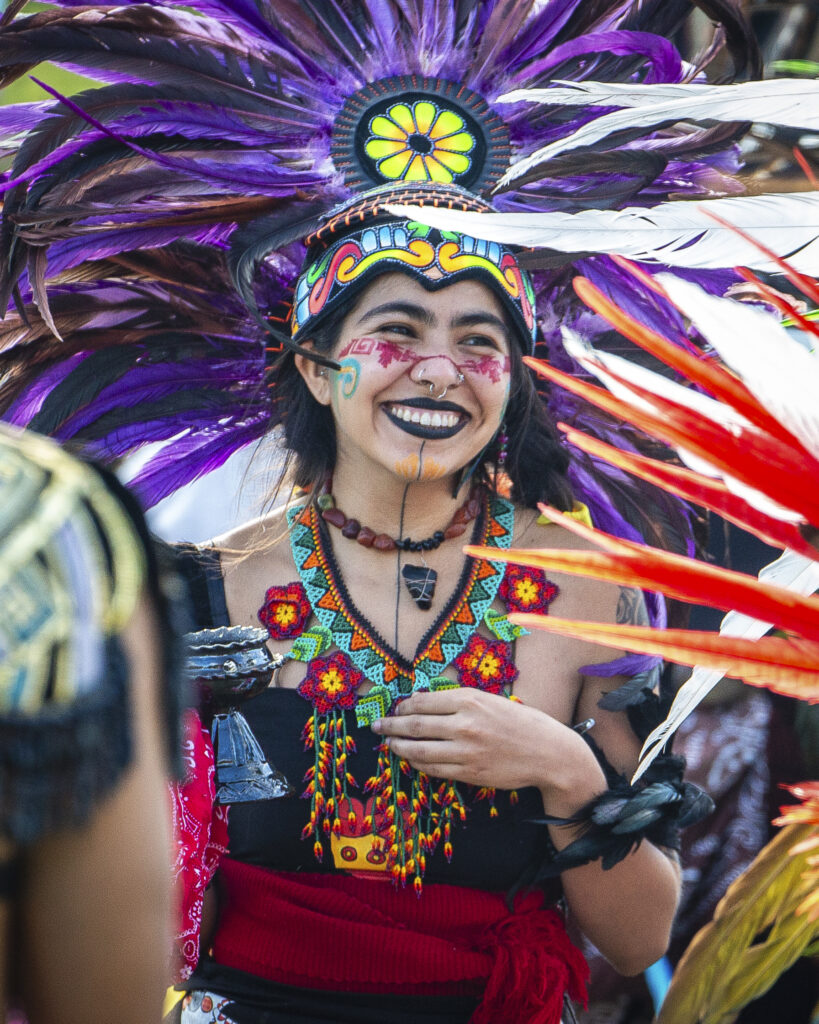
I got into Austin late after battling I-35 traffic. I finally found a parking spot down the street from the park around 4 p.m. I stepped out of my car and immediately heard drumming. Feeling energized by the percussion, I rushed toward the park but realized quickly I needed to ease into the situation. I decided to use a telephoto lens, which allowed me to keep my distance and find an exposure that balanced the colorful regalia with the sun’s harsh light.
After rounding a hill that blocked my view of the ceremony from the street, I was exposed to the powwow’s intricate, but beautiful form of prayer and ceremony: the Danza.
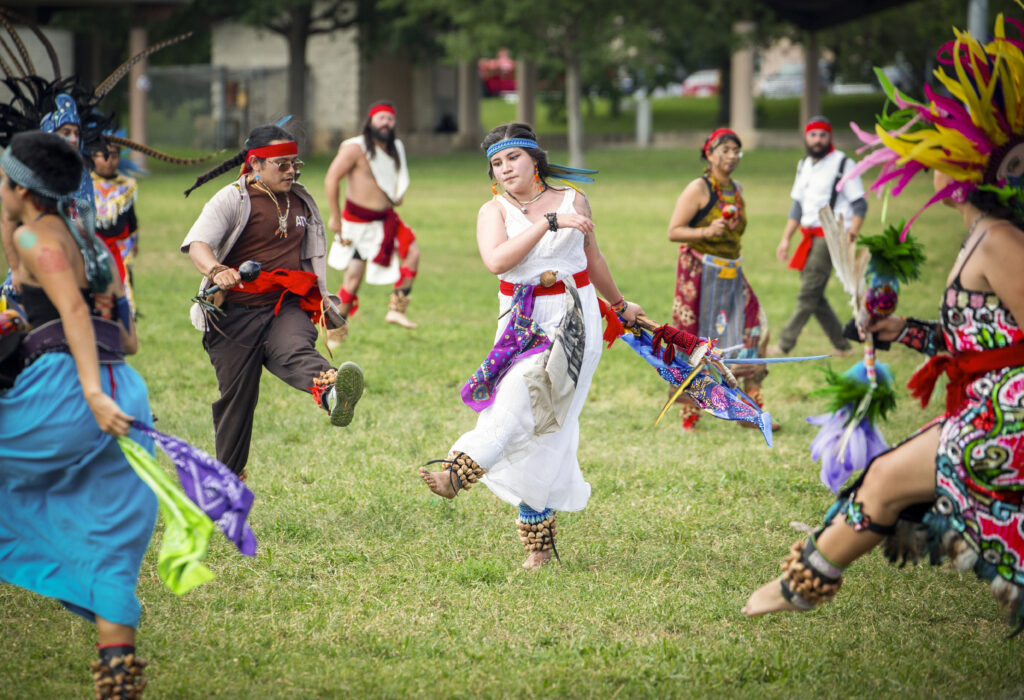
Members of Coahuiltecan tribes composed a ceremonial circle that rippled out from the center of the field. I was mesmerized by the diversity of regalia, traditional Native clothing: headdresses, jewelry, shields, wooden ankle bells.
Ponce, a dance leader for her tribe, explained the overall structure and variations of the tribes’ Danza, or dances. She emphasized that the ritual, often mistaken as an uncontrolled mosh of kicking and yelling, is actually strictly choreographed, each movement or chant pertaining to a god or force of nature.
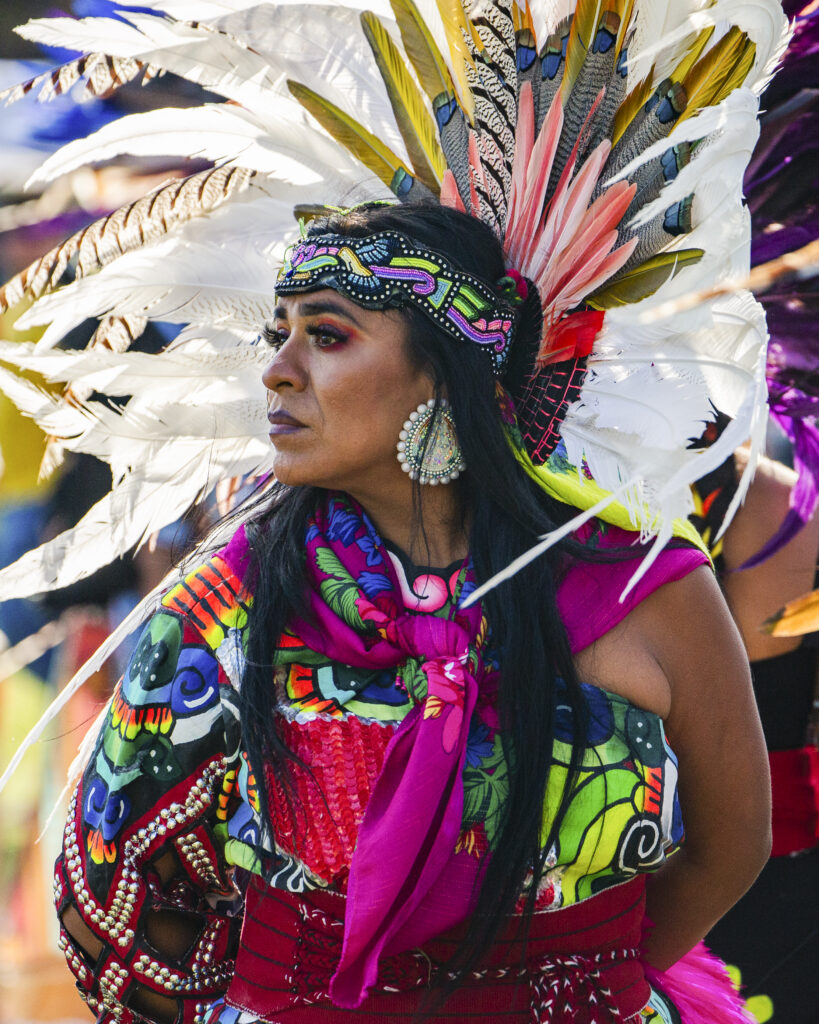
“Every dance and step has meaning,” she told me. “Each Danza is its own deity; each step is a story on the origins of that god. We perform various ceremonies pertaining to planting seeds, war, hunting, women, the Sun, and the Four Cardinal Directions. Some ceremonies are more special than others. The Water Ceremony is only performed once a year.”
Entranced by the drums, I began inching toward the dance circle. Changing to a wide-angle lens, my attention was grabbed by compositions formed in-between the dancers, tangent to the edges of the outermost ring.
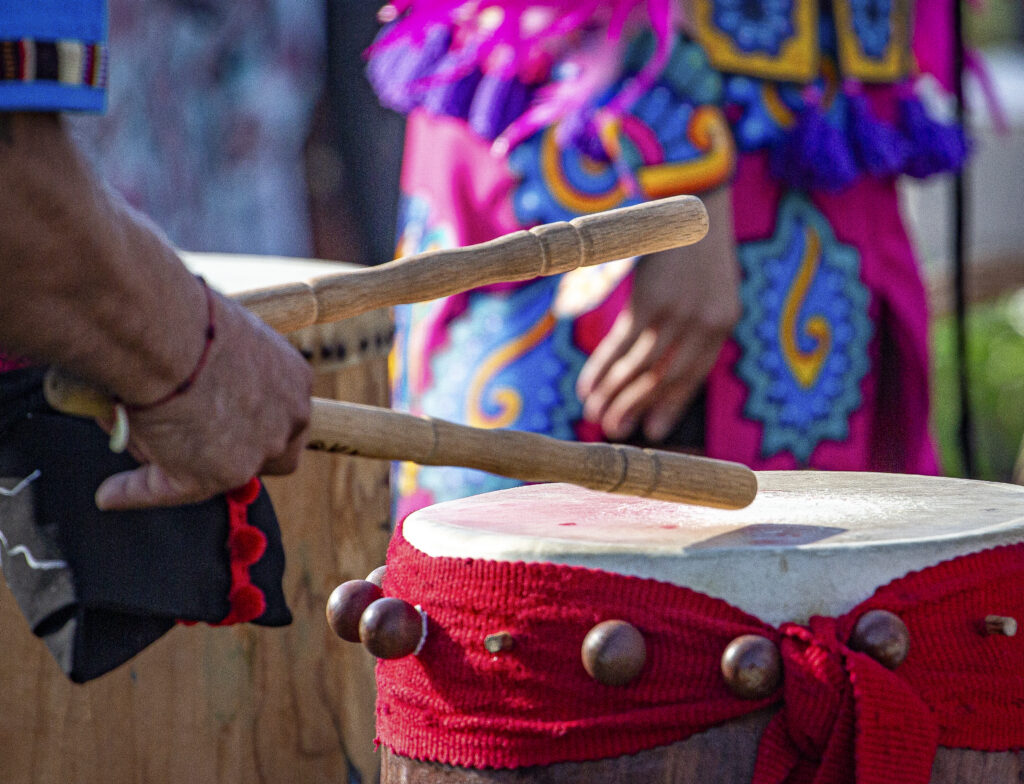
I worked my way around the circle as the intensity of the tribal drums began to increase, freezing moments in order to capture the celebration written on participants faces. Grabbing a few close-ups of the percussionists’ sticks and drumheads, I was in perfect position for the final part of the Danza.
“Concluding the ceremony, we close the four Cardinal Directions with prayer,” Ponce explained.
After all the dancers collapsed inward and stopped, I switched back to my telephoto lens, not wanting to disturb the moment. I felt a change in the atmosphere, and my photos began to tighten around the details and emotions of each member as they prayed around the group. I tried to capture the unique spirit of each person. Members laughed, embraced, cried, expressed anger and became lost in solemn thought. I believe the images I made reflect the power and emotion of the people in them.

Being allowed to witness and document Indigenous spiritual practices was an incredible honor, and the next day, I sent the album of images to Ponce and Mario Alberto Ramirez, another NAIC member. They thanked me and sent the photos to those who attended.
“Everyone is going to love these,” Ponce told me. “Most of these families want professional photos and find these invaluable.”
I felt honored that Ponce and the NAIC members allowed me to be a conduit through which the heritage and practices of native communities could be respectfully shared and preserved. Photojournalism is a powerful medium for education and cultural discourse, and making these pictures deepened my commitment to exploring and sharing stories that convey the power and significance of Indigenous traditions, identity, and spirituality.
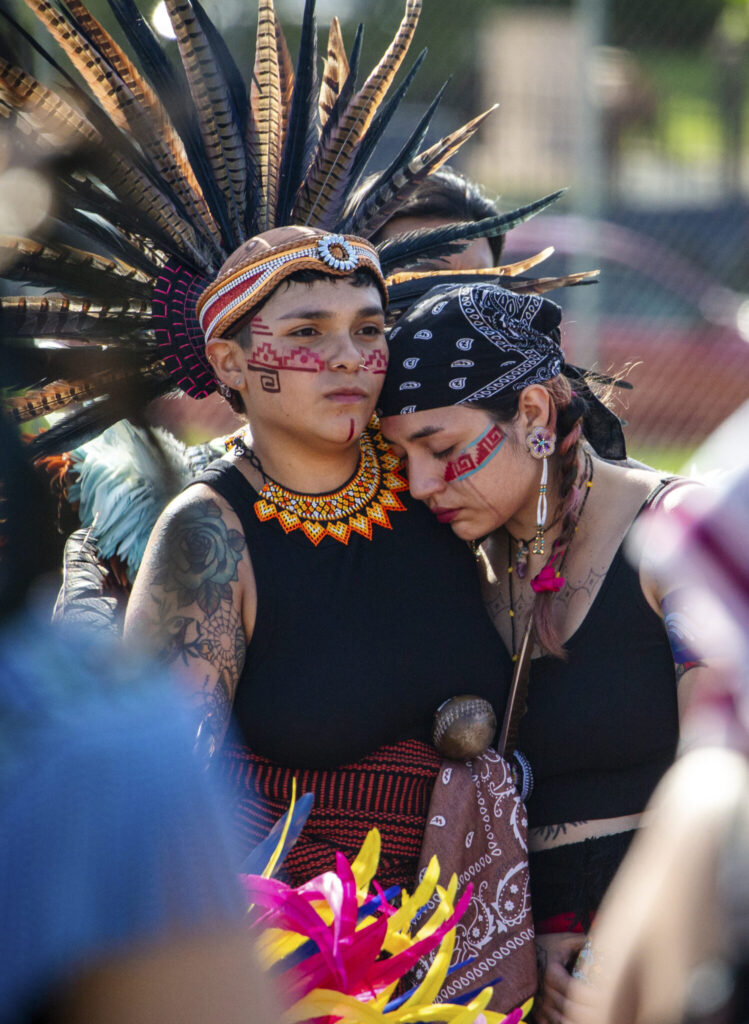
Ponce invited me to attend another powwow in June and to participate in and document a Sweat-Lodge Ceremony — a traditional purification ceremony to which access is rarely granted for outsiders. Hot rocks are placed into a pit within a hut. After water is introduced to produce a large amount of steam, participants will enter the hut and begin their purification, chanting, praying and meditating.
“It’s extremely spiritual,” Ponce said. “The focus is to cleanse the mind, body and spirit. It is pretty intense. These sacred events were very well hidden by our ancestors due to it being labeled as witchcraft. It needs to be documented, but you will have to earn the respect of the tribe first.”
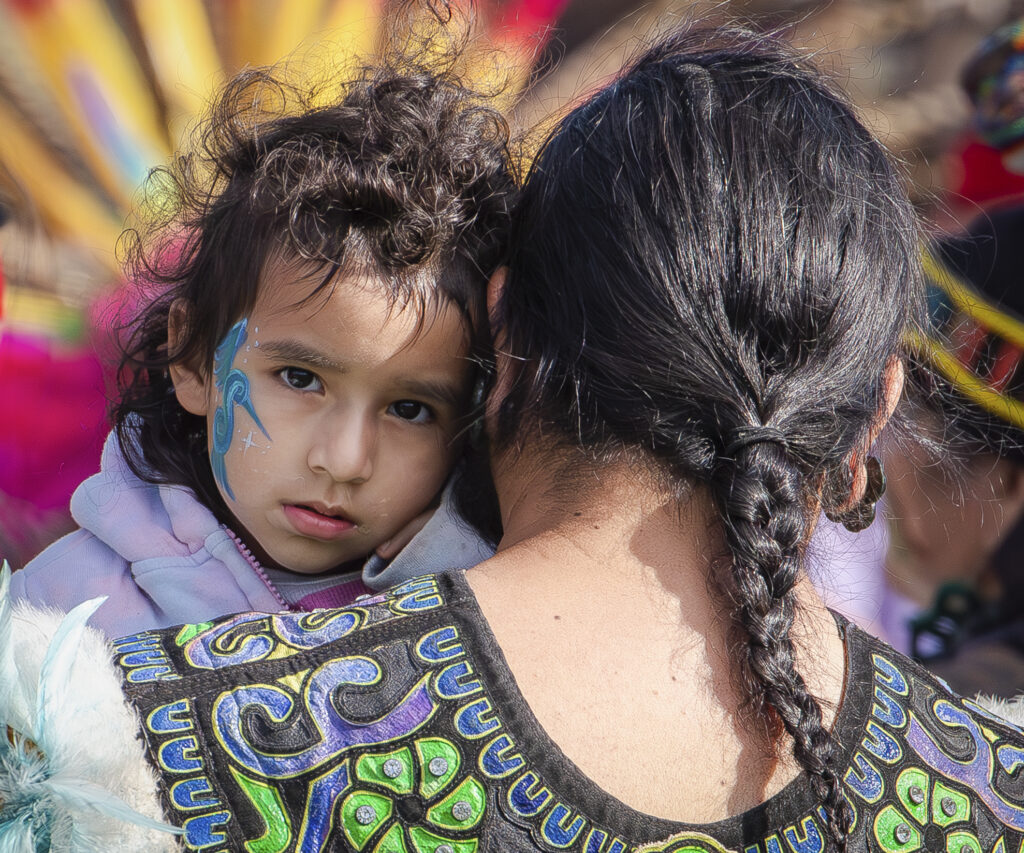
Being invited into more sacred spaces demonstrates the value of humility, empathy and curiosity that we journalists must bring to our jobs. Documenting unfamiliar cultures requires the ability to build trust and acceptance with our subjects by seeking to report with balance, depth and nuance. This experience galvanized my resolve to seek out opportunities to explore indigenous cultures with my photojournalism and continually expose myself to people and topics I don’t yet understand.
Read Next: Researcher Illuminates San Antonio’s Indigenous Past

